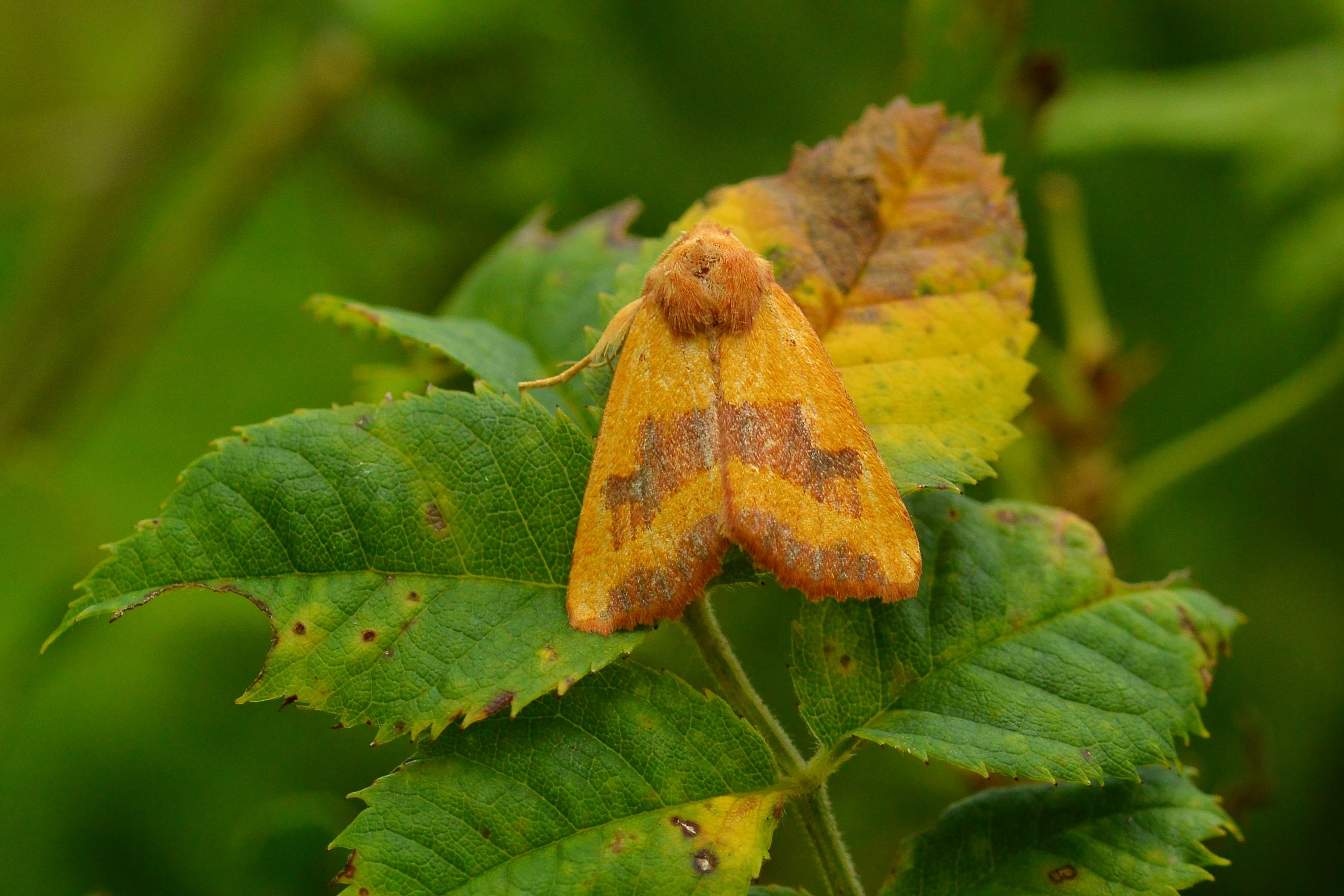Identification
Unmistakable.
Recording Method.
Attracted to light.
Life cycle
One generation. It overwinters as an egg laid in bark crevices. The larvae appear in the early spring to June. Pupation taking place in an underground cocoon.
Larval foodplants
Larvae feed on the unopened buds and flowers of mature Ash.
Habitat
Broadleaved woodland, hedgerows, gardens.
History
Robinson-Douglas (1874) recorded it at Orchardton (VC73) during the season. W. S. Brocklehurst informed Gordon (1913) that he had found it not uncommon at light at Park Place, Glenluce, in September, 1910. It also came to sugar on 14th September 1897 at Corsemalzie, Wigtownshire.
William Evans received specimens from Mowat, the Killantringan lighthouse keeper and also from Little Ross lighthouse during 1913-15 to aid his insect migration studies. Sir Arthur Duncan (1909-84) during his lifetime had found it at Closeburn, Tynron and Castlehill, Dumfries (all VC72).
During 1974-91 Newton Stewart (VC74), Gatehouse of Fleet, Bridge of Dee and Mabie Forest (VC73) and Waterside Mains at Keir (VC72) provided a small amount of records. Kirkton (VC72) and Cally Woods (VC73) during 1992-2010 provided most of our records, while in Wigtownshire it was only found at Barsalloch Point, Forest Moor and Sorbie.










